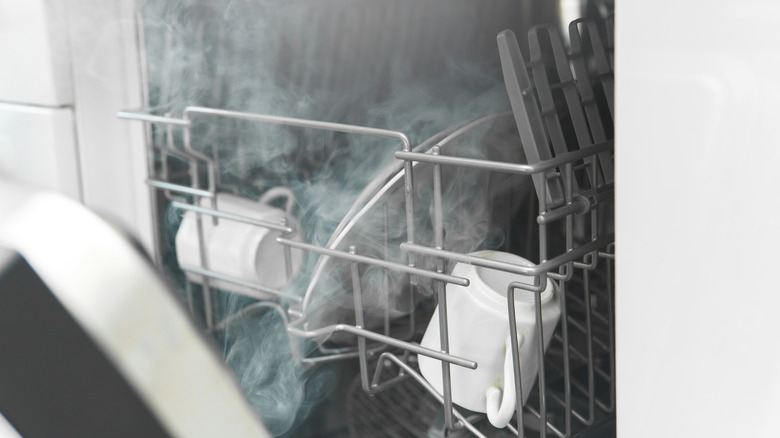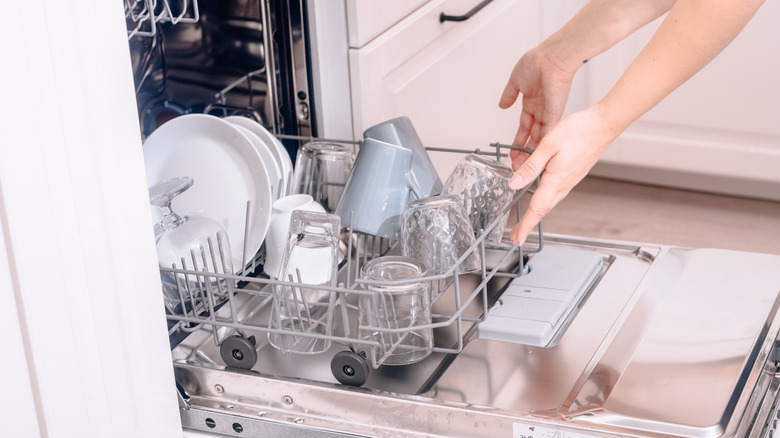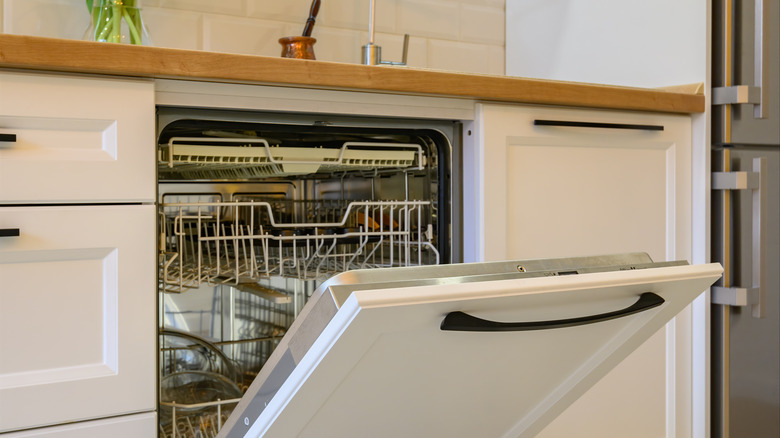Why You Should Think Twice About Using The Heated Dry Cycle On Your Dishwasher
Owning a home comes with many hidden costs, some of which lurk behind windows and doors, walls and pipes, or even your most-used appliances. Take, for example, your dishwasher. The kitchen is one of the largest sources of energy consumption in the home, given all the appliances to run and maintain, but even some of the functions you use once a day could be eating away at your budget.
The heated dry cycle is one option you may want to avoid, especially if you're looking to save a few pennies. It's a convenient and almost luxurious option, and it's the way your parents probably did it, so why wouldn't you opt for fresh, steaming-hot cookware straight from the dishwasher? Well, like most things as a homeowner, you'll encounter the cost later. We're here to break down why you may want to think twice about using the heated dry cycle the next time you load up your dishwasher.
The heated dry cycle isn't as great as it seems
No matter how top-of-the-line your dishwasher is, your dishes will show some signs of damage with the use of heat. Heated dry — which blasts your dishes with hot air to remove any remaining moisture — only adds about half an hour to the wash cycle. While your dishes may look sparkling clean straight from the dishwasher, that won't last for long. My Recipes explains that delicate items in your dishwasher could warp, burn, melt, and bend because of the length of time they're exposed to high heat. Even worse? Your glassware might develop a hazy film, which are spots caused by heat damage. You might get away with drying a wooden spoon or a coffee mug on high heat now and again, but you're rolling the dice. And, chances are, you'll eventually have to replace the item.
Heated drying might cost you the lifespan of your dishes, but it can also minimize just how long your dishwasher lasts, too. According to Atlantic Coast Appliance, your dishwasher will have to put in considerable extra work to get to that level of heat, which could mean replacing your appliance earlier than you planned.
The luxury of a heated dry cycle could also cost you more on your energy bill since this feature can use up to 15% more energy. At the end of the day, skipping the heat drying can save you money now and in the future — it's a no-brainer.
Consider air-drying your dishes instead
Another pro tip: Whatever you do, avoid the heated cycle in the summertime. If it's hot and humid outside, your dishwasher will be working that much harder, leading to a steep energy bill and extra wear on the appliance, according to Direct Energy.
So what can you do instead? Fortunately, most dishwasher models from the last decade offer a second drying option that often goes unused: an air-dry cycle. This may also be called an energy-saver cycle since air-drying doesn't require as much power. Instead of a heating component, the air-dry cycle uses an exhaust fan to slowly — but surely and far more carefully — dry off your dishes (via Hunker). A few extra minutes of patience for a lower energy bill? Sign us up.
If your dishwasher doesn't have this feature, another option is to prop open the door immediately after the rinse cycle is done. MyRecipes even suggests doing this overnight, and you'll have near-dry dishes by morning. This will allow any trapped heat and moisture to escape and naturally evaporate. You may have to dry a few lingering spots with a dishtowel, but it beats ruining your Tupperware!


